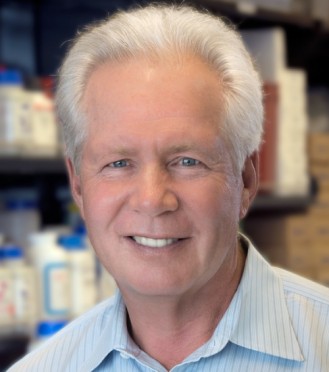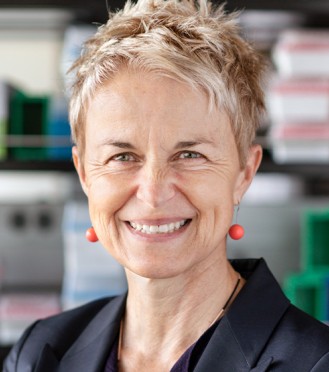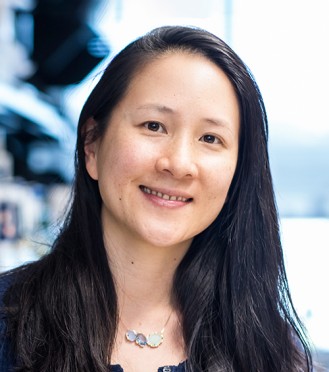Gladstone NOW: The Campaign Join Us on the Journey✕
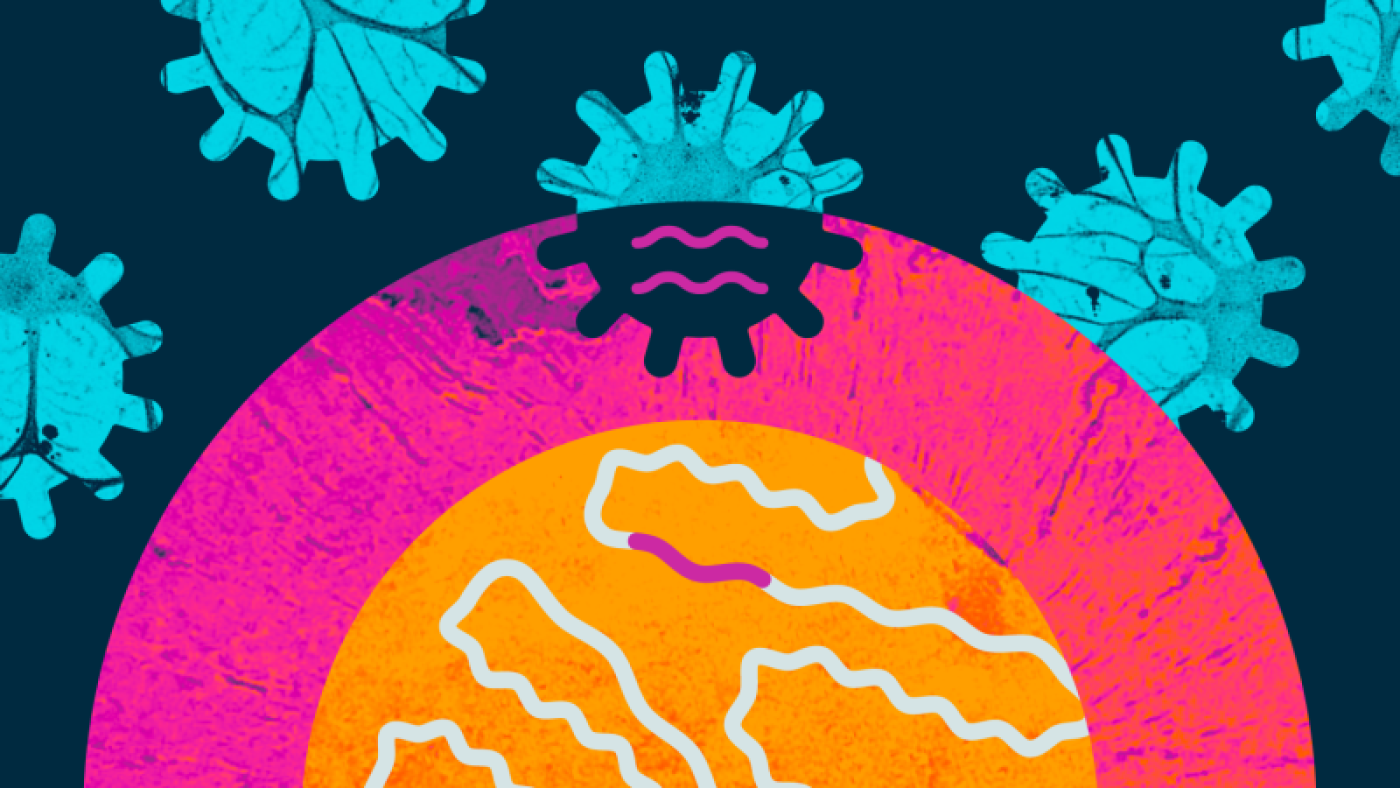
Gladstone scientists are pursuing a broad range of research that could one day help provide a cure for HIV.
Infection with the human immunodeficiency virus (HIV) was once considered a death sentence. Then, powerful antiretroviral drugs were developed and combined to suppress the virus, allowing those living with HIV to have a largely normal lifespan—as long as they take the medications daily.
However, the virus hides out in a latent form in immune cells to evade antiretroviral drugs, and discontinuing these drugs almost inevitably leads to rekindling of active infection. And despite the success of the drugs, they can cause side effects such as inflammation and accelerated aging.
On World AIDS Day 2021, investigators at Gladstone Institutes are aggressively pursuing a broad range of research that could one day help provide a cure for HIV, which now infects an estimated 38 million people worldwide, many of them in developing countries unable to afford or access daily antiretroviral therapy.
HIV: A Resourceful Adversary
HIV has been a daunting adversary for scientists worldwide, who have spent nearly 40 years battling it. The virus has two powerful advantages: (1) HIV rapidly mutates, spinning off genetic changes that have thwarted vaccines and other therapies, and (2) the virus can hide from efforts to eradicate it, embedding itself in the DNA of certain host cells and assuming a latent state.
“A major problem posed by HIV is that it sets up shop in our own chromosomes,” explains Warner Greene, MD, PhD, director of the Michael Hulton Center for HIV Cure Research at Gladstone. “While we have superbly effective antiretroviral treatments that can keep the virus from actively growing and spreading, we have no current way to neutralize the chromosome-integrated forms of HIV. Our only option is to provide daily medications to people living with HIV for their entire lives to prevent the virus from spreading throughout the body.”
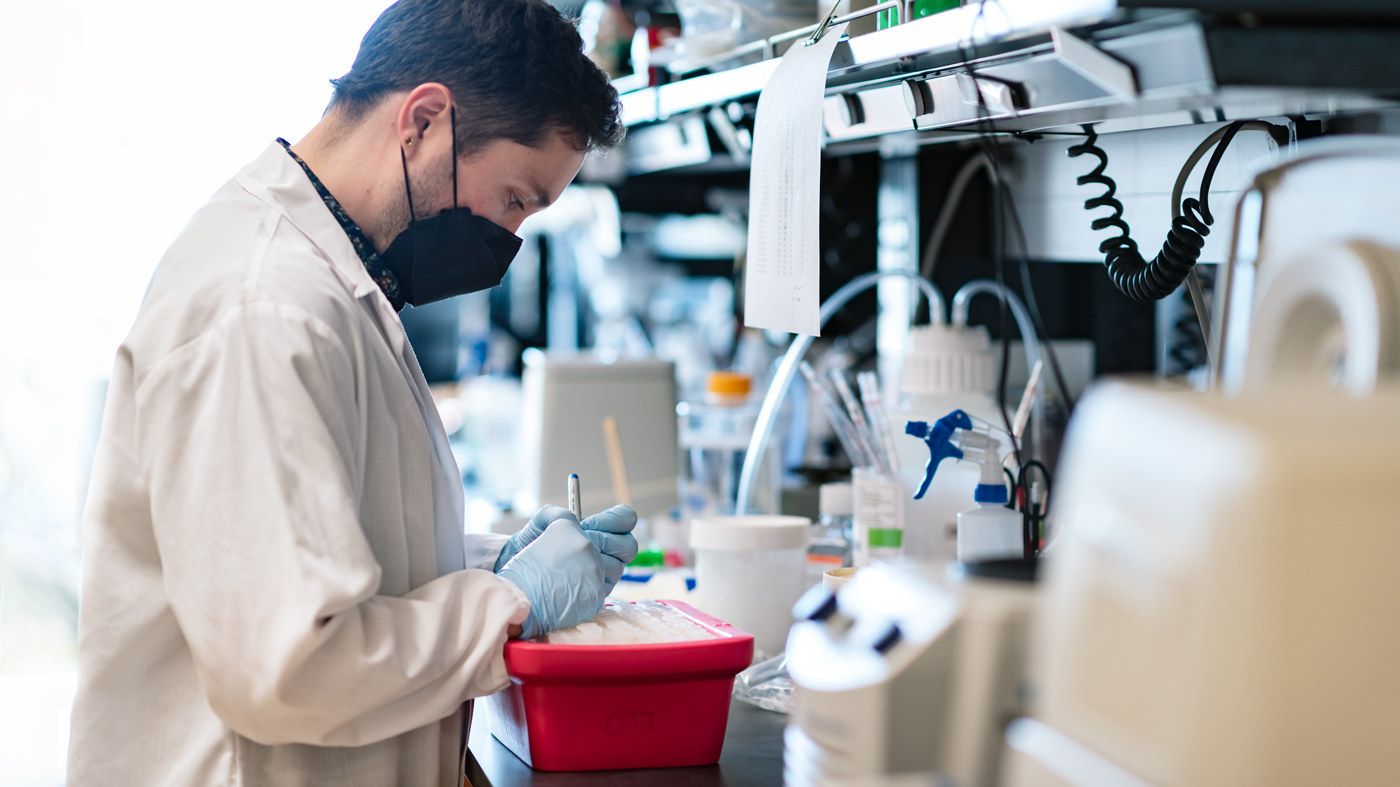
Gladstone scientists are leading innovative strategies to find a cure for HIV. Shown here is Postdoctoral Scholar Frank Soveg working in the Ott Lab.
Scientists have tried to rout the virus by exciting the latent HIV within cells, forcing it to show itself, then killing it with antiretroviral drugs. Known as “shock and kill,” the strategy has so far not been able to clear the reservoir. The available latency-reversing drugs don’t activate enough of the cells harboring the latent virus, and not all of the latent cells that are shocked out of hiding can be effectively eliminated.
“The concept is attractive, but we need improvements in both the “shock” and “kill” aspects of the approach,” says Nadia Roan, PhD, an associate investigator at Gladstone.
Among the other challenges of rooting out the latently infected cells is their rarity.
“Only about one in a million CD4 T cells (the type of cells that HIV infects) carry the latent virus and are able to reactivate,” she says. “It’s very hard to work with something that exists at a frequency of one in a million, although new tools have been developed that are giving us a more complete understanding of which cells are harboring latent HIV.”
Blocking and Locking HIV
To tackle this problem, Gladstone investigators helped form an international research team attempting to achieve a functional HIV cure by silencing the virus inside infected individuals.
They are part of the HIV Obstruction by Programmed Epigenetics (HOPE) Collaboratory, which was recently funded by a $26.5-million grant from the National Institutes of Health. The 5-year initiative includes a dozen institutions worldwide, led by researchers from Gladstone, Scripps Research Florida, and Weill Cornell Medicine.
Instead of shocking and killing the virus, the group is pursuing a different strategy aimed at putting HIV to sleep permanently. The strategy is known as “block and lock.”
“The HOPE Collaboratory is really all about inactivating the virus,” says Melanie Ott, MD, PhD, director of the Gladstone Institute of Virology and the program director of the new collaboration. “The idea we’re pursuing is to move the latent state of the virus into deeper silencing and permanent inactivation. We would change the viral genome so it cannot reactivate, meaning that we could remove antiretroviral drugs without the virus coming back.”
“Our approach could eliminate the need for lifelong antiretroviral therapy.”
As much as 10 percent of the human genome is derived from the genetic code of viruses that once plagued ancient humans. Over time, these viruses were ultimately mutated and silenced, ending their ability to spread and cause disease. The scientists hope to similarly lock down the latent HIV virus, opening the door for potentially eliminating the need for a daily antiretroviral drug regimen.
“What we are trying to do is harness new and exciting molecular advances to accomplish permanent, drug-free silencing of HIV in a matter of weeks,” Ott explains. “We’re taking the blueprint from a process that’s naturally occurring, but that usually takes thousands of years of evolution.”
HOPE researchers hypothesize that once the virus is silenced, they will be able to remove it from the genome so that the infection can no longer spread. This step will require novel CRISPR genome-editing technologies, pioneered by Gladstone Senior Investigator Jennifer Doudna, PhD.
The researchers are also encouraged by work done at Scripps on Tat, a viral protein that activates the HIV virus. Tat inhibitors were studied in the past as potential therapeutics, but those efforts were largely abandoned following the success of antiretroviral drugs. New research finds that the Tat inhibitors, administered for a time and then withdrawn, can silence HIV for much longer periods than standard antiretroviral therapy.
Drugs used in the block and lock strategy would not only impede the Tat protein, but also alter the three-dimensional structure of the HIV genetic material, which would prevent reactivation of the silenced HIV genes.
“What we hope to achieve is the development of a combination treatment that only targets HIV-infected cells and can be directly applied to patients,” she says. “This would eliminate lifelong antiretroviral therapy and replace it with intense short-term treatment, or potentially periodic short-term treatments that would lead to long periods where the virus would not come back. This is a steep curve and a tough goal, but it’s what we need to succeed.”
Natural Controllers versus the Absolute Cure
Block and lock is not the only strategy Gladstone scientists are pursuing.
While the body’s immune system cannot eradicate HIV on its own, scientists have known for some time about a group of individuals known as “elite controllers” who seem able to keep the virus in check without antiretrovirals. In these individuals, some virus remains, but at levels too low to cause the development of full-blown AIDS.
More recently, researchers have identified yet another group that seems able to control the virus after antiretroviral therapy.
“When these post-treatment controllers go off the therapy, sometimes the virus doesn’t come back at all,” says Roan, who is also a member of the HOPE Collaboratory. “Other times, it seems like it is returning, but if you wait a while, the viral count goes back down, so the immune system seems to be controlling it. There’s a big push to understand why these individuals are able to control the virus after treatment is interrupted whereas the virus rebounds in typical individuals.”

Researchers are exploring approaches in which HIV will still remain in the body, but that may be a more realistic goal than eliminating the virus altogether.
Roan’s lab is helping understand how this happens. Early data suggest that the phenomenon is more common among individuals whose HIV infection was treated early. Understanding the mechanism of post-treatment control might lead to a treatment strategy that would involve boosting the immune system.
“The goal would be to manipulate the immune system, for example through a therapeutic vaccination, to convert individuals who would not normally be able to control the virus into a post-treatment controller status,” Roan says.
Should scientists one day be able to block and lock the virus away, or predictably create a kind of détente between the virus and the immune system, HIV will still remain in the body, but this may be a more realistic goal than eliminating the virus altogether.
“My thought is that a cure that aims to get rid of every last latently infected cell will be very challenging to achieve,” Roan says. “These cells are not only all over the body, but they are rare and we don’t know how to target them. A functional cure, however, may be a more realistic and successful strategy.”
Engineered Particles to Control the Virus
Scientists attempting to control viruses face a common challenge: the tiny invaders are more agile than medical treatments, which can neither mutate nor transmit themselves. But what if viruses, which make their living hijacking cellular machinery to produce viral copies, could themselves be hijacked?
For nearly 20 years, Leor Weinberger, PhD, director of the Center for Cell Circuitry and a senior investigator at Gladstone, has pursued this innovative hypothesis, developing the concept of Therapeutic Interfering Particles, which some refer to as TIPs.
His team’s goal is to create single-administration, resistance-proof therapeutics that could treat HIV in resource-limited settings and in communities where it is difficult to achieve sustained adherence to antiretroviral therapies. TIPs operate as engineered molecular parasites that steal the machinery viruses need to make copies of themselves, and so far, the virus appears unable to evolve resistance to TIPs.
“This would be a different approach to controlling viruses,” he says. “These particles were considered a minor footnote in virology, for 70 years. They were really a backwater of the field. Recently, our group discovered that they could be engineered into therapeutics for HIV and for SARS-CoV-2.”
The group recently published a series of studies reporting the discovery of the first TIPs, and is in discussions with the US Food and Drug Administration regarding clinical trials, funded by the National Institutes of Health and the US Department of Defense, to study the safety and effectiveness of TIPs for HIV and SARS-CoV-2.
Lessons Learned from HIV
The SARS-CoV-2 virus that causes COVID-19 is rapidly becoming the most studied virus to emerge since HIV was identified in the 1980s. The field’s rapid success in creating effective vaccines and developing potent antiretrovirals was accelerated by decades of HIV research, Greene says.
“HIV has taught us a lot, for example it provided key information that led to a drug cure for hepatitis C,” says Greene, another member of the HOPE Collaboratory. “Many of the great advances in virology trace back to the fundamental work first done on HIV. While at some level we haven’t been as successful with HIV, in that we do not yet have a vaccine or a cure, we do have incredible antiretrovirals that are saving people’s lives.”
COVID-19 efforts also benefitted from what had been learned about mobilizing a worldwide response to the AIDS pandemic.
“When SARS-CoV-2 hit, the scientific and regulatory communities were quickly reminded of what we faced during the AIDS pandemic,” says Ott. “If SARS-CoV-2 has taught us one thing, it’s that when we all pull at the same string and know we need something immediately, it can actually happen.”
Why No HIV Vaccine?
Since 1987, according to the World Health Organization, more than 30 HIV candidate vaccines have been tested in clinical trials, involving more than 10,000 healthy volunteers. None have succeeded.
“I’m more optimistic about a cure for HIV than I am about a vaccine for this virus.”
HIV attacks the CD4 T cells that are essential to fight off infection, making it difficult for the immune system to defend itself. Moreover, the virus’s rapid mutation makes it a difficult target for vaccine development, and this inability of the immune system’s inability to take on HIV that has made vaccine development so frustrating.
“A guiding principle in the development of vaccines is that if there are individuals who are natural convalescents, that is people whose immune systems have successfully suppressed the virus and who have recovered from the infection, then it is very likely that a vaccine can be developed to train the immune system to fight off the virus,” says Weinberger. “With SARS-CoV-2, we knew early on that a large fraction of infected individuals successfully cleared the virus and recovered. In contrast, with HIV, if you acquire the virus, your immune system cannot successfully clear the virus. With perhaps one or two exceptions in 40 years, we have no examples of natural convalescents.”
Efforts are now underway to use the messenger RNA technology that made SARS-CoV-2 vaccines possible against HIV. Will these make a difference in the long quest for an HIV vaccine? Greene isn’t convinced.
“I’m more optimistic about a cure for HIV than I am about a vaccine for this virus,” he says. “While I hope I am wrong, the incredible diversity of HIV and its ability to mutate and establish a latent reservoir, make the development of a vaccine really difficult. One of the reasons we were able to successfully develop vaccines for SARS-CoV-2 is that this type of coronavirus mutates much less than HIV.”
Progress in Preventing HIV Infection
PrEP is a regimen of antiretroviral drugs given before an individual is infected with HIV that is designed to protect people at risk. When used as recommended, it can dramatically reduce transmission risk. But it appears to be more effective at preventing HIV in men who have sex with men than in heterosexual women—a group of individuals who are also at risk, especially in sub-Saharan Africa.
Roan’s lab is studying the factors that may be responsible for the difference.
“We are trying to understand what happens during the earliest of events when the female reproductive tract is exposed to HIV,” she says. “Historically, both in the HIV cure and prevention areas, most studies have focused on men. We really need more effective ways that can prevent transmission and cure HIV for the entire population at risk.”
How Much Longer?
World AIDS Day, begun in 1988, is dedicated to raising awareness of the AIDS pandemic caused by the spread of HIV infection, and mourning those who have died of the disease. But how much longer will the day appear on calendars?
Ott isn’t willing to hazard a guess. Dramatic progress has been made, but the challenges ahead are daunting, even with new funding and strong international collaboration.
“It’s not going to be a switch that we flip,” she says. “My commitment is to transfer the urgency and the focus that we have had for SARS-CoV-2 back into HIV to advance the last few meters toward the goal of a functional cure.”
Featured Experts
Science in Seconds | Researchers Pinpoint Key Gene Behind Heart Defects in Down Syndrome
Science in Seconds | Researchers Pinpoint Key Gene Behind Heart Defects in Down Syndrome
In this video, Gladstone scientists share how they used stem cells, gene editing, and AI to identify a gene driving heart defects in Down syndrome—and how reducing its levels in mice restored normal heart development, offering hope for future treatments
Gladstone Experts Cardiovascular Disease Data Science and Biotechnology Pollard Lab Srivastava Lab AI Big Data CRISPR/Gene Editing Human Genetics Stem Cells/iPSCsScience in Seconds | The Thinking Microscope: Research Powered by an AI Brain
Science in Seconds | The Thinking Microscope: Research Powered by an AI Brain
In this video, Steve Finkbeiner and Jeremy Linsley showcase Gladstone’s groundbreaking “thinking microscope”—an AI-powered system that can design, conduct, and analyze experiments autonomously to uncover new insights into diseases like Alzheimer’s, Parkinson’s, and ALS.
Gladstone Experts ALS Alzheimer’s Disease Parkinson’s Disease Neurological Disease Finkbeiner Lab AI Big DataVisualizing Stem Cell Technology: An Animated Explainer
Visualizing Stem Cell Technology: An Animated Explainer
In this animated short, Deepak Srivastava explains how scientists can reprogram ordinary skin or blood cells back in time—turning them into induced pluripotent stem cells which are capable of becoming any cell type in the body.
Gladstone Experts Stem Cells/iPSCs

